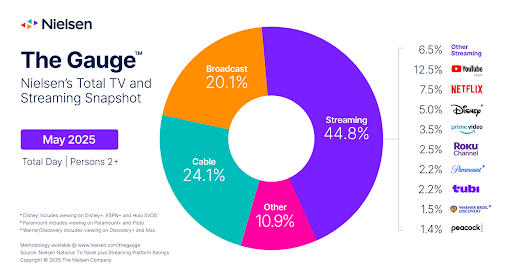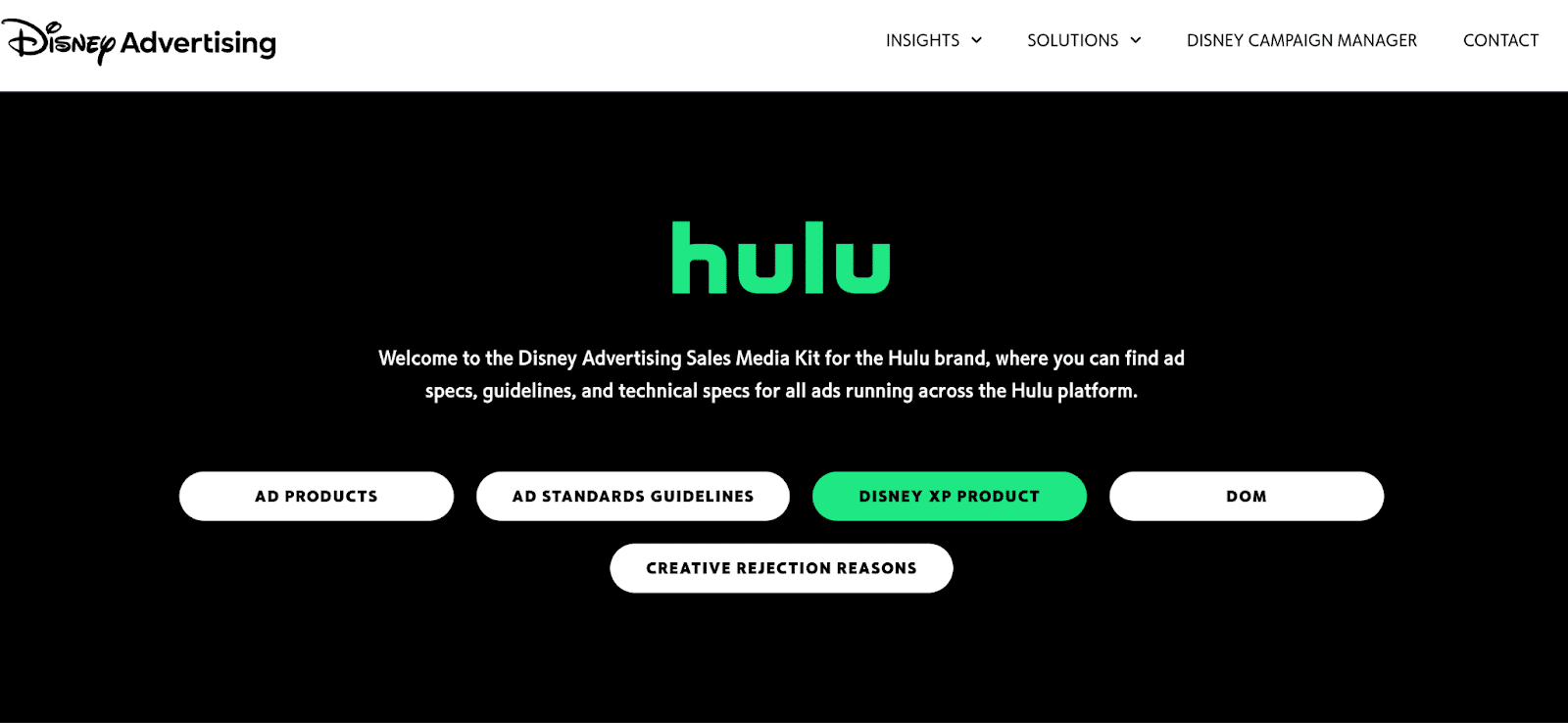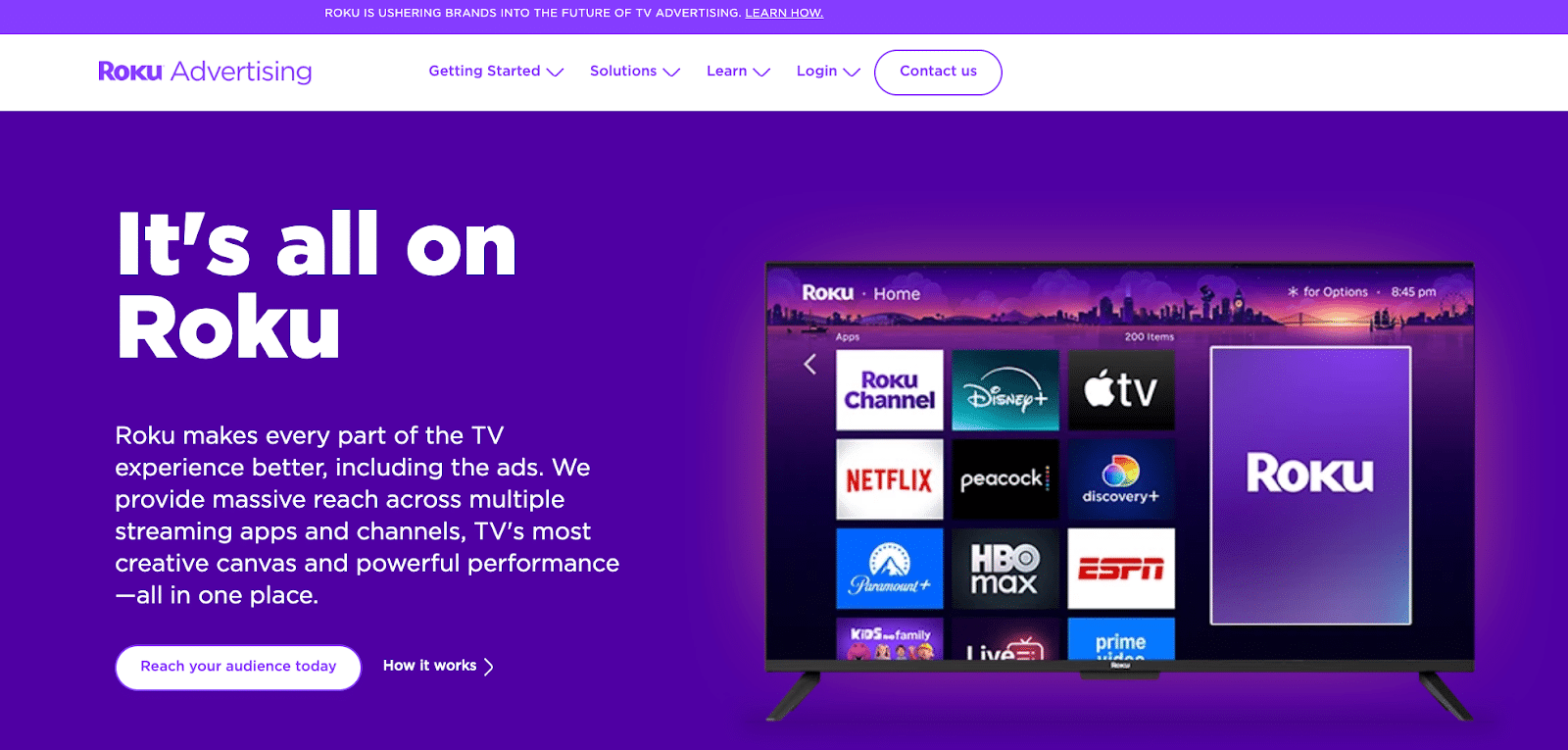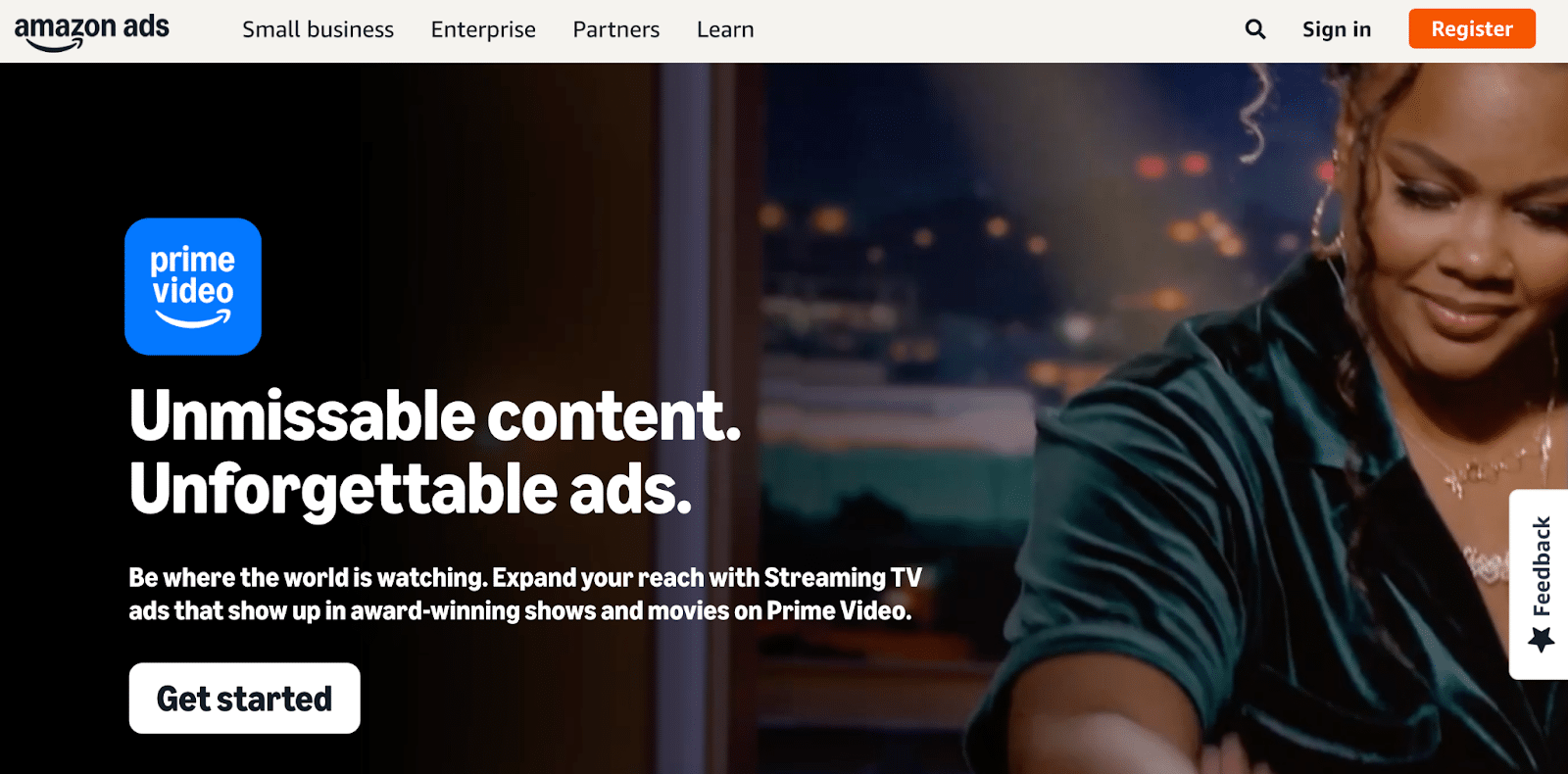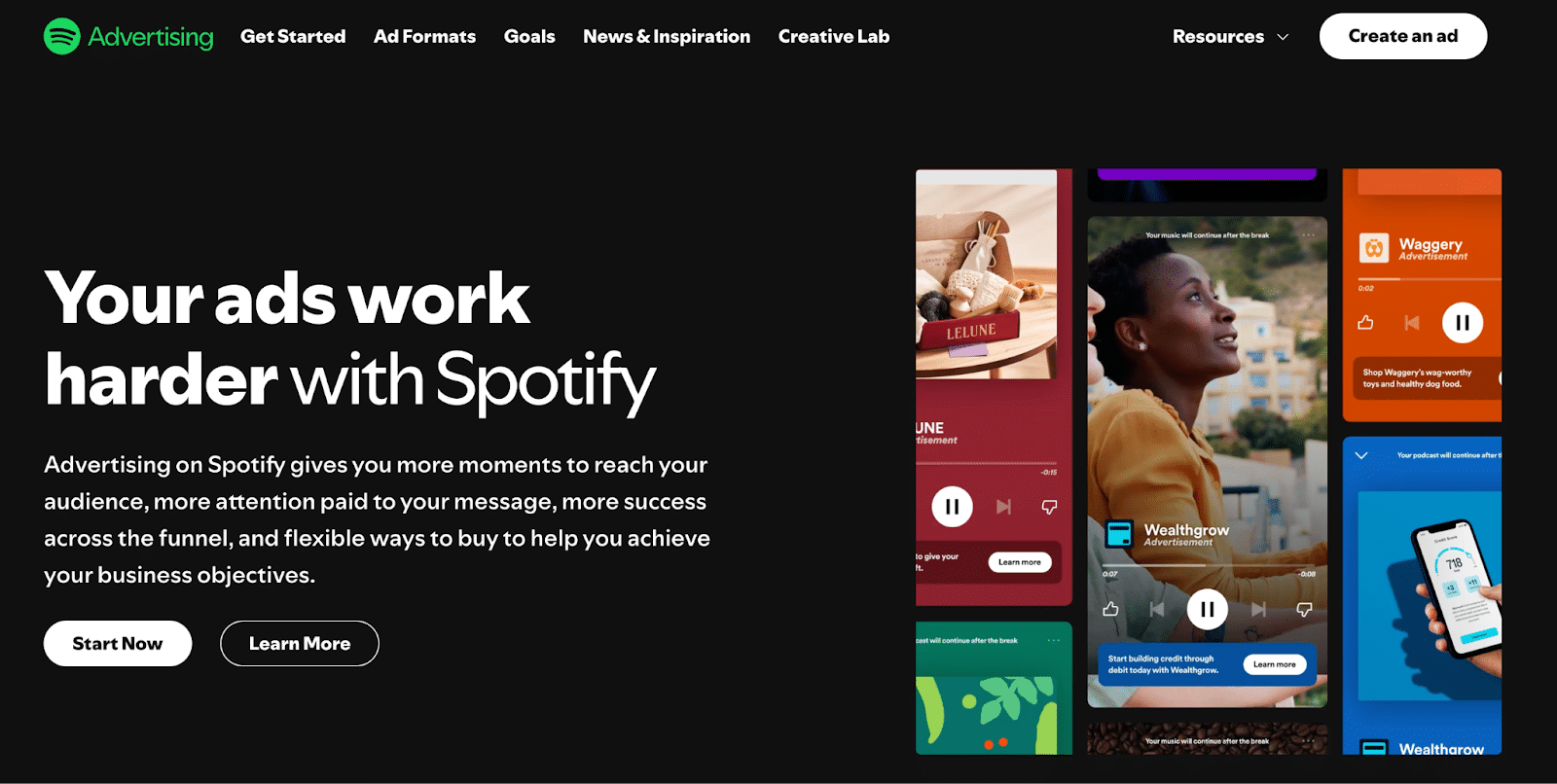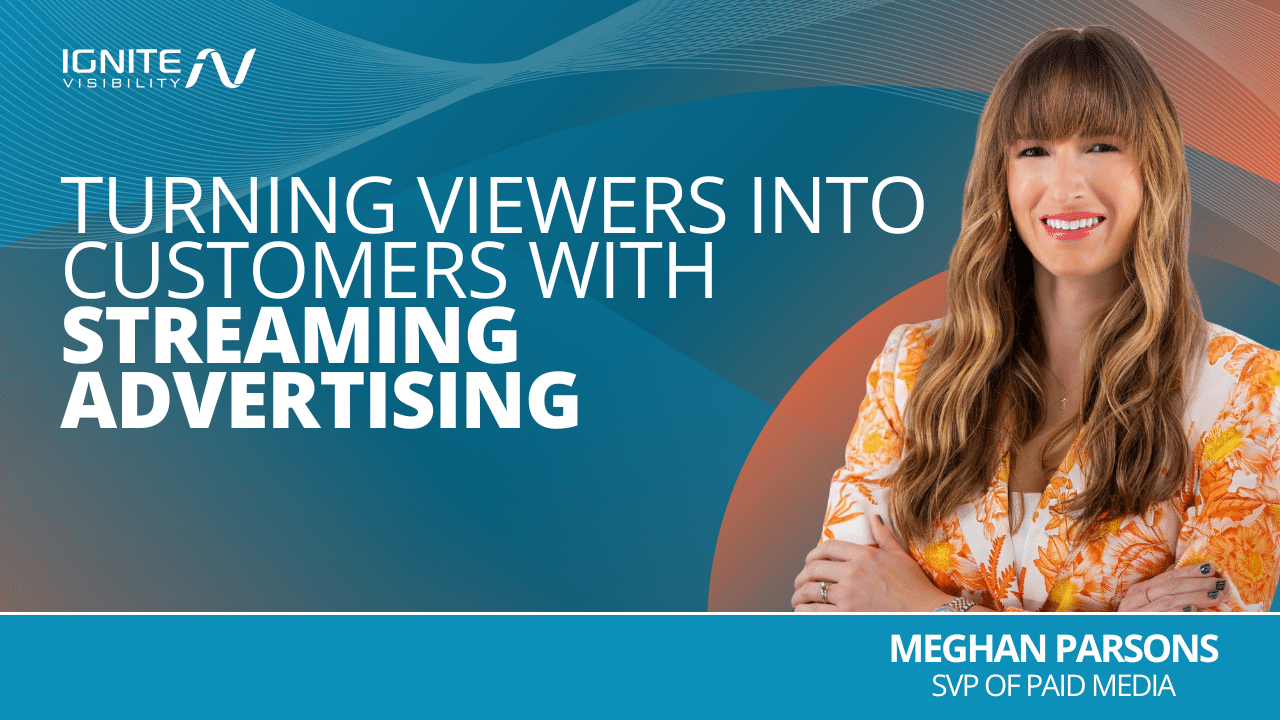
If you’ve been thinking about taking the jump into ad supported streaming services, now might be the time. With a record number of people using platforms like Hulu, Netflix, and Amazon Prime, it may be the most effective way to reach your target audience.
In this blog, Meghan Parsons, SVP of Paid Media, will explore how to advertise on streaming services, from understanding the different platforms and ad formats to implementing best practices that will make your ads shine brighter than the latest Netflix original.
Expert Opinion on Advertising on Streaming Services
Streaming advertising isn’t just the future. It’s now. A lot of brands aren’t exploring streaming channels, which makes them essentially invisible to entire segments of consumers who have cut the cord on traditional TV.
If these streaming services are popular with your target audience and your competitors are basically ignoring this vital area of paid media, why shouldn’t you get ahead of the curve and try your hand at adding this to your marketing strategy?
This proactive approach can unlock unprecedented reach and engagement with your desired consumers.
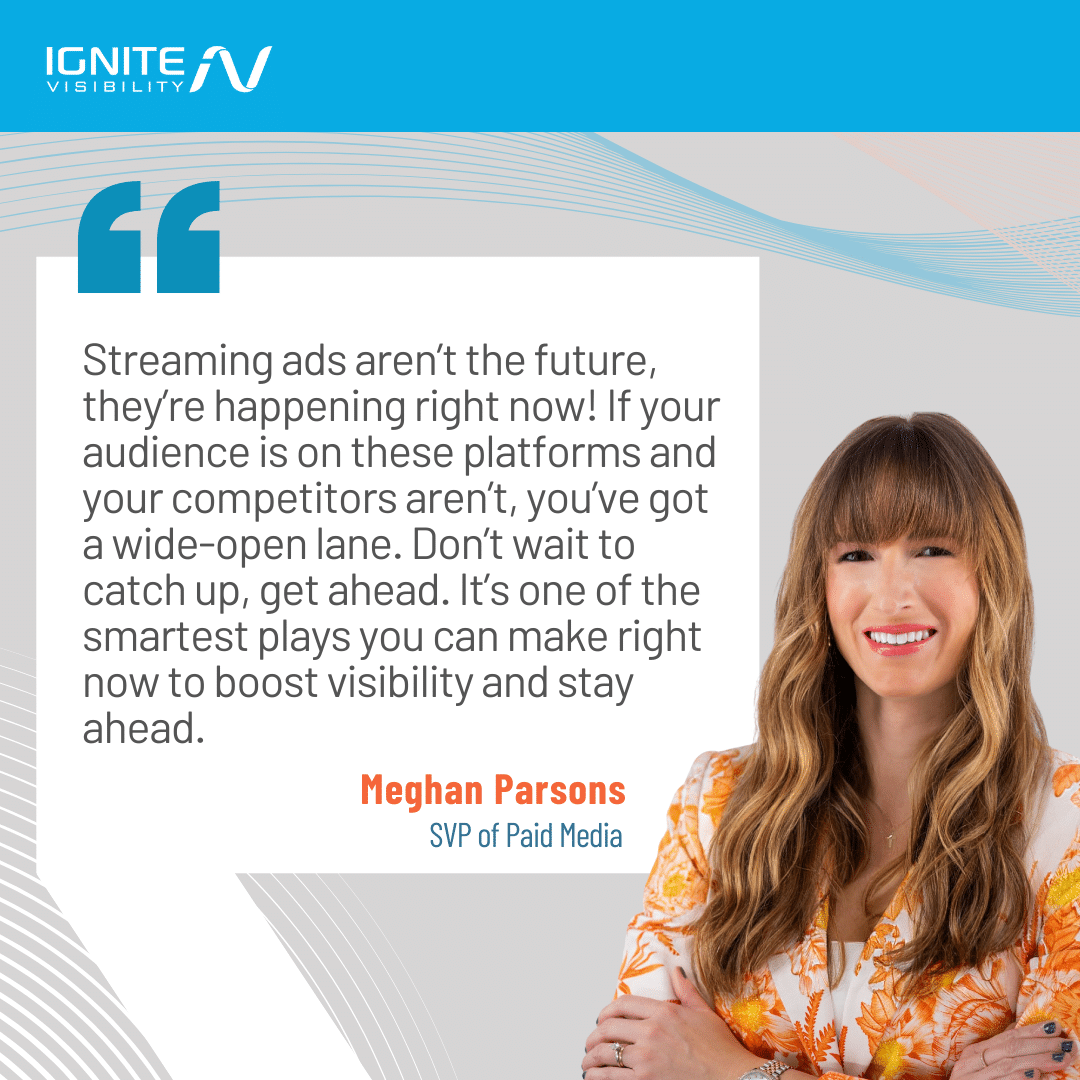
The Rise of Streaming Advertising
Remember when everyone gathered around the TV at 8 PM sharp to catch their favorite show? Thanks to smartphones and smart TVs, those days are pretty much gone.
Traditional TV viewership has been on a steady decline, with Nielsen reporting that streaming viewership surpassed broadcast TV for the first time. Meanwhile, streaming platforms are experiencing explosive growth, with the average American now subscribing to four different streaming services.
This shift has created a golden opportunity for advertisers. Ad supported streaming services are booming, with platforms like Hulu, HBO Max, and even the formerly ad-free Netflix introducing lower-cost tiers with advertisements. For marketers, this means access to engaged audiences who are actively consuming content they’re passionate about.
Understanding Streaming Platforms: OTT vs. CTV
Before we dive deeper, let’s clarify some industry jargon that gets tossed around like confetti at a parade.
- OTT (Over-the-Top): This refers to content that bypasses traditional distribution channels, such as cable or satellite, and is delivered exclusively over the internet. Think of services like Netflix, Hulu, Disney+, and HBO Max that you can watch on a variety of devices, not strictly a TV. It’s called “over-the-top” because it goes over the top of the traditional cable box.
- CTV (Connected TV): This refers specifically to television sets connected to the internet, either through built-in capabilities (smart TVs) or devices like Roku, Amazon Fire Stick, or Apple TV.
Why does this matter for advertising on streaming services? OTT encompasses all streaming content regardless of device, while CTV specifically targets viewers watching on the big screen.
Different audiences consume content differently across these platforms, so if you want to reach a specific audience, you need to know which type of advertising will work best for you.
Benefits of Advertising on Streaming Platforms
While it isn’t for everyone, there are a ton of really strong benefits to advertising on streaming services.
Precision Targeting
Streaming platforms collect vast amounts of data about viewing habits, preferences, and demographics, allowing you to target specific audiences with surgical precision. According to a study by Innovid, targeted streaming ads see engagement rates up to 3.8 times higher than traditional TV ads.
Measurable Results
Unlike traditional TV advertising, where you might as well throw your marketing dollars into a black hole and hope for the best, streaming advertising provides real-time, detailed analytics.
Cross-Device Reach
Streaming ads can follow viewers across their phone, tablet, laptop, and TV, creating seamless experiences. A recent study found that multi-device campaigns increased customer retention by 89% compared to single-device campaigns.
Cost Efficiency
Streaming advertising can be more affordable than traditional TV spots, especially for small to mid-sized businesses. With options to set daily budgets and pay only for actual impressions, it’s like getting premium billboard space but only paying for the people who actually look at it.
Types of Streaming Ads
Just like most other types of marketing, there are various types of streaming ads. Here are the main types you’ll encounter:
Pre-roll Ads
These ads play before your content starts, like YouTube ads that appear before a video. They’re the digital equivalent of “We’ll be right back after these messages,” except they play before, not after.
Mid-roll Ads
Mid-roll ads are the commercial breaks of the streaming world. On Hulu, for example, you’ll see these natural breaks during longer content, often with a countdown to let viewers know when their show will resume.
Post-roll Ads
These appear after the content ends. They typically have lower completion rates, as there is no incentive for consumers to continue watching, but they can be effective in reinforcing earlier messaging.
Interactive Ads
These ads invite viewer participation, like choosing different endings or exploring product features. Peacock’s interactive ads allow viewers to request more information or even make purchases using their remote.
Shoppable Ads
The holy grail of immediate conversion, these ads let viewers purchase products directly from their screens. Amazon Prime Video has pioneered this space, letting viewers pause content and purchase products featured in the scene.
Audio Ads
Streaming ads aren’t just for visual content. Platforms like Spotify and Pandora also offer audio advertisements between songs or podcasts. These can be particularly effective when paired with complementary display ads that appear on screen simultaneously.
Top Streaming Platforms for Advertisers
Not all streaming platforms are created equal when it comes to advertising opportunities. Here’s a rundown of the major players:
YouTube
With over 2.7 billion logged-in monthly users, YouTube offers incredible reach. Its TrueView ads give viewers the option to skip after five seconds, meaning you only pay when viewers watch at least 30 seconds (or the full ad if it’s shorter).
And yes, watching commercials absolutely does help YouTube content providers. When viewers watch ads on YouTube, creators and brands receive a portion of that advertising revenue.
Hulu
With 50+ million subscribers, Hulu offers a premium environment for ads on streaming services. Their audience skews younger and more affluent than traditional TV, with robust targeting options based on viewing behavior.
Roku
As both a platform and device maker, Roku offers unique advertising opportunities. Their Roku Channel reaches households with over 80 million active accounts, and they offer interactive ad formats that traditional platforms can’t match.
Amazon Prime Video
With the power of Amazon’s consumer data behind it, Prime Video allows advertisers to target based on actual purchase behavior, not just what people say they might buy someday.
Disney+
The newest entrant to the ad supported streaming services, Disney+ offers a brand-safe environment with high-quality content that appeals to families and Disney enthusiasts.
Spotify
For audio streaming advertising, Spotify leads the pack with over 252 million premium subscribers and more than 640 million monthly active users. Their targeting includes playlist-based options that can align your brand with specific moods or activities.
Best Practices for Effective Streaming Advertising
Now that you understand the landscape of advertising on streaming services, let’s talk about how to make your campaigns successful:
Keep It Brief
Attention spans are shorter than ever. For pre-roll ads, 15-30 seconds is the sweet spot. If you can’t convey it within that time, you may need to simplify your message.
Front-Load Your Message
Remember that many ad formats allow viewers to skip after a few seconds. Put your brand and key message in those first five seconds, so even skippers get the main point.
Design for Sound-Off Viewing
Up to 85% of social media videos are watched without sound, and this behavior extends to streaming. Use captions and visual storytelling to ensure your message lands even when the volume is down. Not only will this help your brand get its point across, but it also makes your messages more inclusive and accessible to all watching audiences.
Personalize When Possible
Use the rich targeting options available to create variations of your ads that speak directly to different audience segments. Personalized ads have been shown to increase engagement by up to 20%.
Test and Optimize
The beauty of digital advertising lies in its ability to test multiple variations and optimize in real-time. A/B test different creative approaches, calls to action, and even targeting parameters to continuously improve performance.
Consider the Viewing Context
Ads that acknowledge their environment perform better. For example, Hulu ran a successful campaign where characters in the ad referenced being “stuck in an ad break,” making viewers more likely to pay attention.
Challenges and Considerations
Streaming advertising isn’t all sunshine and binge-watching. Here are some challenges to keep in mind:
Ad Fatigue
Seeing the same ad repeatedly can lead to viewer annoyance. Prevent overexposure by creating multiple versions of the same measure and putting a cap on your ad frequency.
Subscription-Based Ad Avoidance
Many viewers pay premium prices specifically to avoid ads. This is why quality matters. If your ad provides value or entertainment, it won’t feel like an unwelcome interruption.
Measurement Complexities
Despite improved analytics, measuring across platforms and connecting streaming ad exposure to final conversions can be challenging. Consider using incrementality testing to truly understand the impact of your streaming campaigns.
Ad Blockers
While less prevalent on TV-based streaming compared to web browsing, ad-blocking technology continues to evolve. Focus on creating ads that viewers won’t want to block because they’re actually relevant and enjoyable.
Future Trends in Streaming Advertising
Where is streaming advertising headed? Let’s talk about some of the upcoming trends.
AI-Generated Personalization
AI is making its mark on everything, and streaming ads are not exception. This will enable the creation of hyper-personalized ads tailored specifically to individual viewers based on their preferences and behaviors. Imagine an ad that features your favorite color scheme or references the last product you browsed online.
Virtual Product Placements
Rather than interrupting content with traditional ads, brands will increasingly pay for digital product insertions. That coffee cup on the table in your favorite show? It might be digitally added and different for each viewer based on their preferences.
Interactive Storytelling
Ads will become more like mini-interactive experiences, allowing viewers to explore products or services through choice-based narratives.
Voice-Activated Responses
As smart TVs incorporate voice assistants, ads will invite viewers to respond verbally to learn more or make purchases. “Tell me more about that vacation package,” could trigger additional information sent to your phone.
Shoppable Everything
Soon, virtually any item seen in streaming content will be purchasable with a few clicks of your remote. See a jacket you like on a character? Pause and buy it instantly.
FAQs About Advertising on Streaming Services
Why do streaming services have ads?
Streaming services use ads as a way to make their platforms more affordable for consumers while still increasing their revenue. On the other hand, when done correctly, advertising on streaming services is also pretty lucrative for advertisers, too. It’s a win-win-win situation!
How much does it cost to advertise on streaming platforms?
Costs vary widely based on platform, targeting options, and ad format. YouTube ads can start as low as 10 cents per view. Hulu offers a package with a $500 ad minimum. This doesn’t take into consideration the money it takes to create consumable and creative ad content. The best way to determine the exact cost of running streaming ads for your business is to contact an advertising company for a proposal.
Can small businesses advertise on streaming services?
Absolutely! While some premium platforms have high minimum spends, options like YouTube, Roku Advertising, and local streaming through services like Comcast Advertising or Premion offer entry points for smaller budgets. Self-service platforms like YouTube and Amazon also make it easier for small businesses to get started with a budget they’re comfortable with.
What metrics should I track for streaming ads?
Key metrics include completion rate (percentage of viewers who watched the entire ad), view-through rate (for skippable formats), engagement rate (for interactive ads), and conversion attribution.
For brand campaigns, consider brand lift studies to measure awareness and perception changes. Most importantly, align your metrics with your campaign objectives. Awareness campaigns should be measured differently from direct response efforts.
Does watching commercials help YouTube content providers?
Yes! A portion of the income YouTube content creators make from the platform comes directly from advertising revenue. So, when you watch those ads, you’re helping creators and the advertisers.
Taking the Plunge into Advertising on Streaming Services with Ignite Visibility
Why do streaming services have ads in the first place? Because they work. For viewers, ad-supported tiers make content more accessible. For platforms, they create additional revenue streams. And for advertisers, they provide access to engaged audiences who are increasingly hard to reach through traditional channels.
Whether you’re looking to build brand awareness, sell more products, or schedule more appointments for your home services agency, Ignite Visibility can help you make it happen.
Join the hundreds of businesses and franchises across the country who have turned to us to help make their content marketing plan work for them. Our strategies help everyone from healthcare providers to home service agencies make the most out of their advertising dollars.
Ignite Visibility can help you:
- Choose the right ad supported streaming service
- Develop content that viewers will be happy to watch
- Create a funnel without sticking or extreme drop-off points
- And more!
Are you ready to dive into this new world of streaming advertising? Your audience is waiting, remote in hand, ready to be engaged. Just make sure your ad is good enough that they don’t hit the skip button!

